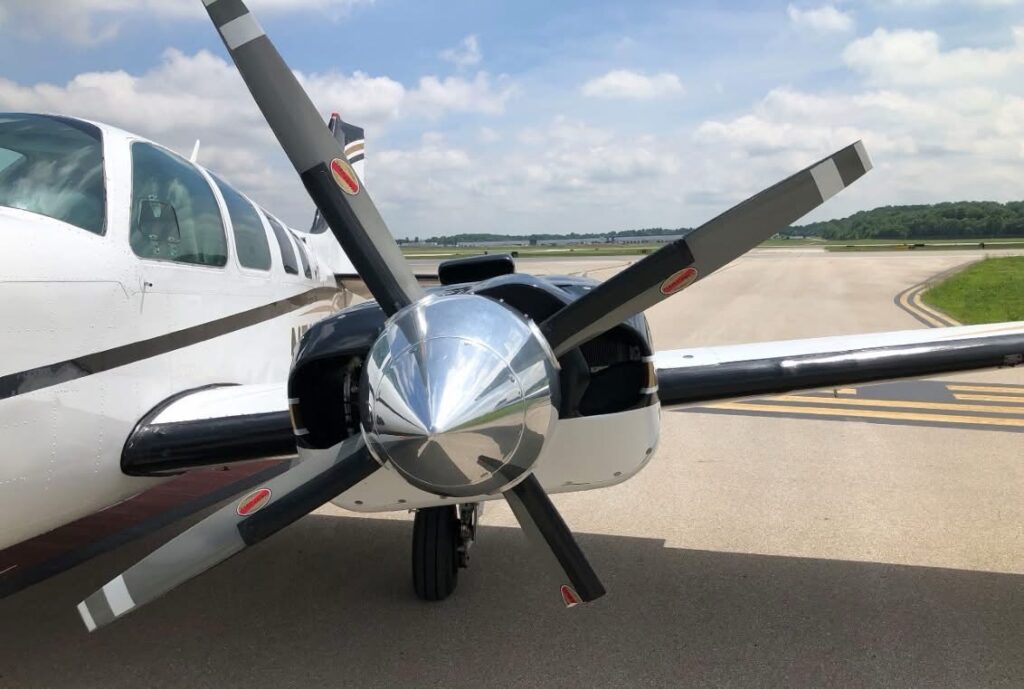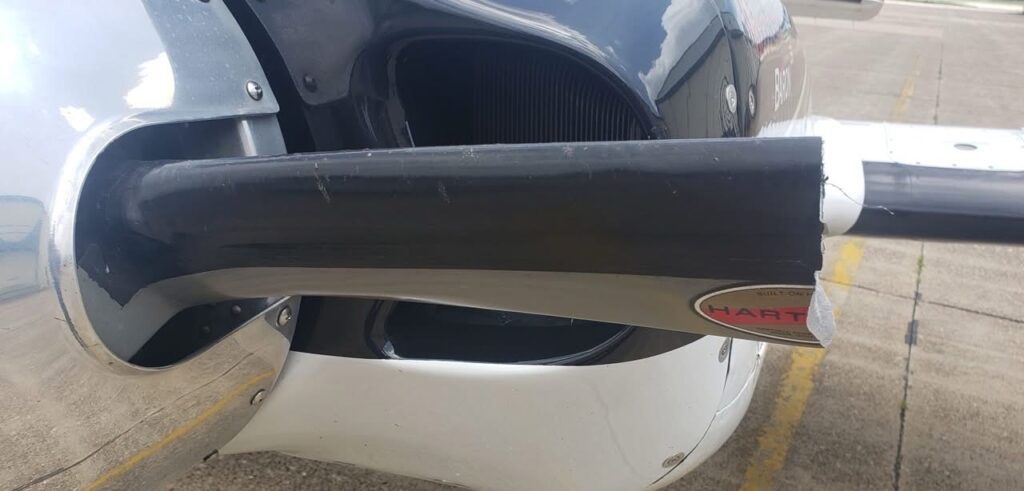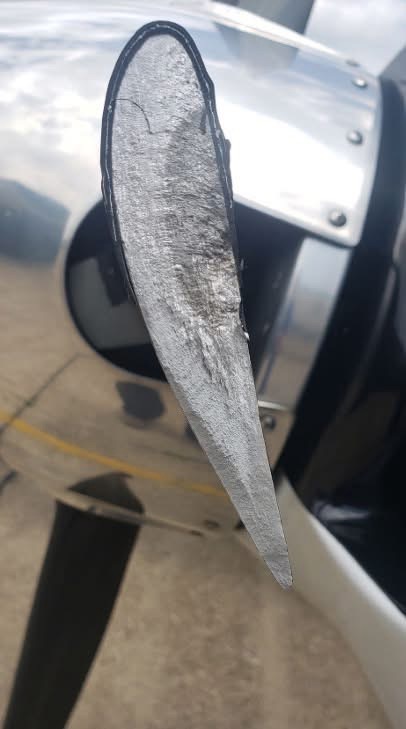
N78KL Beech 58 Evansville Indiana 08 JUN 2022
5 No Injuries
Pilot Flight Time: 3734 hours (Total, all aircraft), 270 hours (Total, this make and model)
The airplane was about 1 hour into the cross-country flight when the pilot heard a “boom” noise. The airframe began vibrating, and the airplane yawed to the left. The pilot contacted approach control and stated that he needed to land the airplane immediately. The pilot was directed to divert, and he landed the airplane without incident. After exiting the airplane, the pilot noticed that one of the aluminum propeller blades on the left engine had separated about midspan, resulting in minor damage. The “boom” that the pilot heard was likely the blade separating in flight.
Examination of the fracture surface revealed signatures consistent with high-cycle fatigue failure. The fatigue origin area was coincident with an area of damage that was covered with a thick black paint. The paint had a slightly different composition than the thinner layer of black paint on the rest of the blade. No evidence indicated any repair in the area of the damage and investigators were unable to determine when the damage was painted.

Although the investigation could not determine, based on the available evidence for this incident, when the damage that led to the fracture occurred, or when the damage was painted, it is likely the damaged area was present at the airplane’s most recent 100-hour inspection, which occurred 28 hours before the incident. The presence of the black paint could have made it difficult to detect the damage during the mechanic’s visual inspection of the blade surface during the airplane’s most recent 100-hour inspection. Had the damage been detected during the 100-hr inspection it should have triggered maintenance of the propeller blade.
The damage was also hidden but detectable during the preflight inspection conducted by the pilot before the accident flight. Had the damage been detected by the pilot, it should have triggered further examination and maintenance of the propeller blade.
Probable Cause and Findings:
The failure of the propeller blade due to high-cycle fatigue that originated from damage that occurred at an unknown time. Contributing to the accident was the failure to identify the damage before the accident flight.



